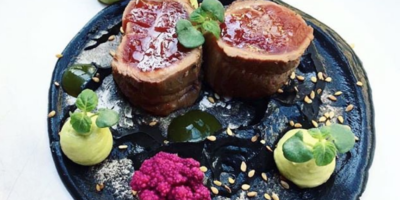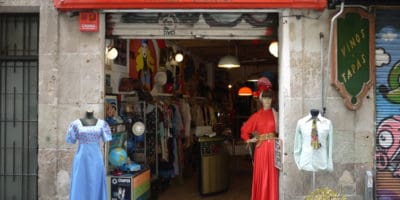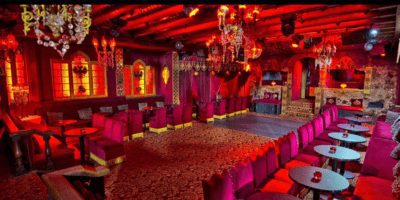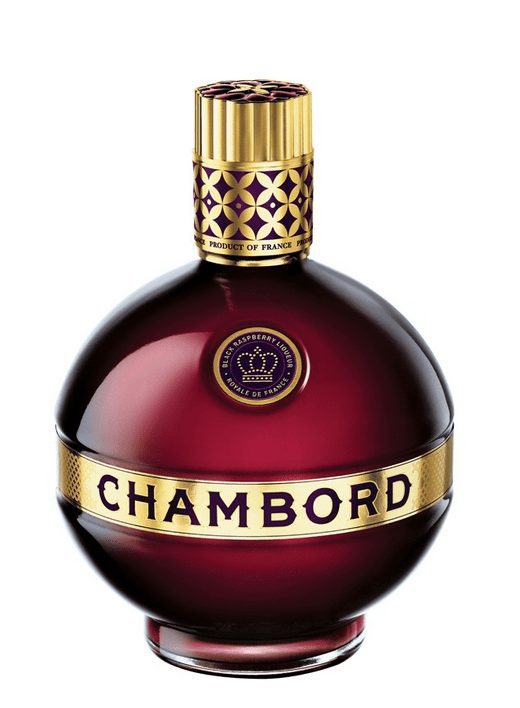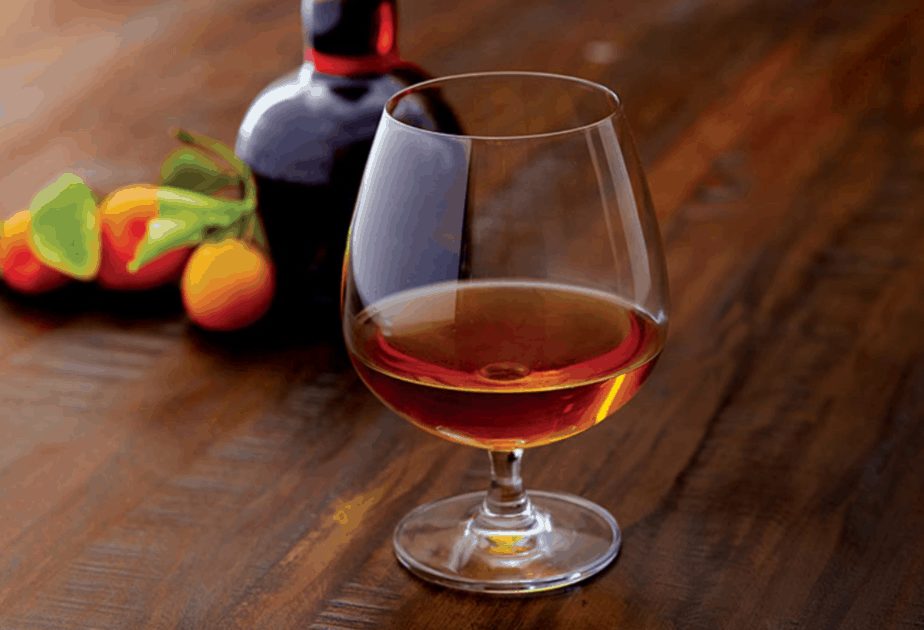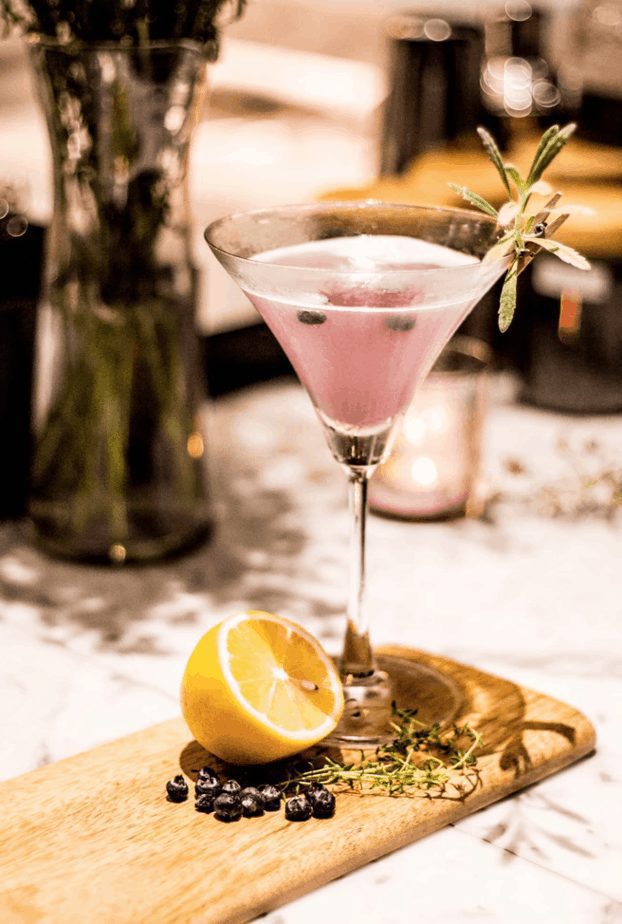15 Traditional French Spirits to Taste in Paris
Updated by Vanessa M in July 2023.
France is known for its exceptional food and of course plentiful wine, but the country also produces an impressive number of spirits. Each region has it’s own specialty, from Normand apple brandy to herbal elixirs brewed up by monks in the Alps; France has quite the variety of traditional spirits.
Whether it’s time for an apéritif, a digestif or simply an afternoon pick me up, this article has everything you need to find a traditional French spirit you’ll love.
So, here are 15 traditional French spirits to taste in Paris!
1. Chambord
If you’re a fan of fruity drinks, you’re going to love Chambord. This raspberry liqueur is cognac-based and flavored with raspberries, blackberries and vanilla. It’s most popular in cocktails, but you can also add a bit of Chambord to a glass of Champagne to make a Kir Royal.
According to local legend, this French spirit was created in 1685 by Louis XIV on one of his visits to the Château de Chambord in the Loire Valley. While this story remains to be proven, Chambord has definitely become a historic favorite throughout France, especially in Paris.
You can enjoy this traditional French spirit almost anywhere in Paris. A good bartender will have some on hand, so if you don’t see it, don’t be afraid to ask!
2. Ricard/Pastis
Ahh Pastis, this is one of the most emblematic and traditional French spirits ever! And this one is even considered France’s national drink. Pastis is an anise or licorice flavored liqueur, native to the South of France. And you should know that Pastis is the quintessential Provençal drink.
The most famous Pastis is called Ricard, which was created by Paul Ricard in 1932. Today, you can still visit the Ricard Islands in the South of France, near Marseille. This is where the liqueur is rumored to have been invented, and the idyllic islands are now a popular vacation destination.
It’s almost impossible to find a café in the south that doesn’t serve Pastis of some kind, and the same is true in the nation’s capital! This is one traditional French spirit that you absolutely must taste in Paris. Ricard is most often enjoyed mixed with water, or over ice as an apéritif. Find a nice café table outside, order a pastis and just like that, you’ll be enjoying Parisian summer like a local.
3. Calvados
Calvados is a traditional French spirit hailing from Normandy. The Normandy region in the Northwest of France is known for their exceptional apple and pear production. And so it’s only logical that one of their most famous regional spirits is an apple brandy.
In Normandy, Calvados is typically enjoyed during the trou Normand which is a mid-meal drink. But as meal times have gotten shorter over the years, the tradition has been expanded too. Nowadays, Calvados can be served as an apéritif, digestif or anytime in between.
Calvados’ distinct apple flavor make it popular in Normand cooking as well. If you travel to Normandy, you can expect to find Calvados in everything from pastries to ice cream. But you can certainly try this traditional French spirit here in Paris too! Here, most restaurants and cafés serve Calvados as an after-dinner digestif.
4. Cognac
Out of my whole list, I think Coganc is one of the most well known traditional French spirits that you can taste in Paris! This well-loved spirit originally comes from Charente, in Southwestern France, but Cognac is now a favorite worldwide.
Cognac has many varieties and different aging processes, which changes the taste a lot! Some Cognac producers add coffee, or notes of different fruits and spices to get their unique taste.
Traditionally, Cognac is a brandy made from white grapes which is then distilled and aged in oak barrels. This special process gives French Cognac its famous smooth and slightly woodsy taste.
In Paris, you’ll find Cognac on just about any restaurant or bar menu. Parisians usually enjoy this rich spirit as an after-dinner digestif. Cognac is the perfect end to a great French meal if you ask me!
5. Saint-Germain
Saint-Germain is one of the more unique French spirits to taste in Paris. This classic elderflower liqueur was actually named after my favorite Parisian neighborhood, Saint-Germain-des-Prés.
Saint-Germain liqueur was officially launched in 2007. Though according to local legend, the creator of this Parisian favorite is supposedly the great grandson of Chambord’s creator.. These colorful histories leave a lot up to the imagination, but who knows for sure?
Saint-Germain liqueur has a mild, floral flavor, which makes it a popular addition to various cocktails. But the elderflower essence is definitely not lacking. That’s because each bottle contains over 1,000 handpicked elderflower blossoms!
You’ll find a variation of Saint-Germain cocktails in almost every Parisian bar, but the Café de Flore in the liqueur’s namesake neighbohood makes one of the best I’ve tried. Order the famous Vanity Flore made with Champagne, Saint-Germain and Apérol. Now sit back, relax and enjoy watching the city pass by before your eyes, from one of the chicest perches in all of Paris.
practical information:
café de flore – 172 boulevard saint-germain 75006
metro: Saint-germain-des-prés (line 4)
open daily 07:30-01:30
6. Absinthe
Absinthe is one of those drinks with a ton of connotations. When you hear the world absinthe, you probably imagine yourself back to yesteryear: sitting around in a Belle Epoque brasserie, surrounded by the likes of Van Gogh, Hemingway and Manet. The latter have been known for their absinthe affinity throughout history and, supposedly Van Gogh even cut off his ear in a fit of absinthe-fueled insanity. But just what is the story behind this legendary green liquor?
Absinthe actually comes from Switzerland, though it made its way across the border to France shortly after it was invented in 1798. At roughly 74% A.B.V, Absinthe is no joke, and definitely not a spirit for the faint of heart (or liver). Some even claim the Anis-flavored beverage has psychedelic properties!
Absinthe rapidly found popularity with the Bohemian crowd in France, and especially in Paris. The French authorities outlawed Absinthe in France briefly in 1915, but eventually rescinded the ban.
Today, you won’t find Absinthe everywhere in Paris, but it’s relatively common. If you’re in the mood to try something new, why not taste Absinthe in Paris? For great cocktails and classic Absinthe service, I especially like Lulu White, which is a typical Belle Epoque style bar in Paris’ 9th district.
practical information:
lulu white – 12 rue frochcot 75009
Metro: Pigalle (line 2)
open weekdays 19:00-02:00 and Weekends 19:00-04:00
7. Bénédictine
Now if you’ve never tried Bénédictine, you’re in for a surprise. Due to its regional origins, this traditional French spirit is lesser-known, especially for foreigners.
Bénédictine actually has quite the rich history, if it’s to be beleived. Legend has it that Monks in Normandy started producing this strong herbal concoction as a “medicine” in the 1500’s. Made up of exactly 27 herbs, plants and spices Bénédictine certainly has a unique taste.
But at 40% A.B.V. it’s a little hard to beleive that it was originally supposed to be a medicinal elixir. Nowadays Bénédictine is usually enjoyed on its own as an after dinner drink, but the health benefits are up for debate. But medicinal or not, this herby liqueur is one traditional French spirit to taste in Paris!
8. Grand Marnier
Grand Marnier is an incredibly diverse French spirit used. It’s basically a Cognac brandy distilled with bitter orange and sugar. The final result is a subtly sweet, citrusy liqueur used in everything from duck à l’orange to flambée desserts. And we can’t forget that it’s a classic addition to cocktails. Basically, Grand Marnier is an all around French favorite.
The original ornage-flavored Grand Marnier has been around since 1880! And since then, they have also introduced a peach and a cherry version. Perfect for adding to a glass of Champagne, or a sour cocktail.
Maybe you’re familiar with another traditional French spirit, Cointreau which used in Margaritas. While Grand Marnier is similar to Cointreau, don’t confuse the two! The latter is made with a neutral liqueur base rather than Cognac, which gives it a more neutral orange flavor.
Both liqueurs are delicious as an apéritif mixed with Champagne. So don’t hesitate to taste these traditional French spirits during your Parisian apéro.
9. Chartreuse
No, not the color! Although, the bright yellow-green hue we refer to as “chartruese” most certainly got its name from this traditional French spirit.
Again, as with many other traditional French spirits, the history of Chartreuse begins with some medicine-practicing monks. Legend has it that in 1605, Parisian monks headquartered in what is now the Jardin du Luxembourg received a mysterious recipe for a long-life elixir. This recipe intrigued them, and they worked for years to try and create the mysterious beverage. At some point, the recipe was brought to some monks near Grenoble, in the French Alps. These Carthusian monks tweaked the recipe a bit, and the result was chartreuse.
And these monks have supposedly been brewing this fortifying beverage in the French Alps ever since. There are over 130 different ingredients in Chartreuse, and the exact recipe is kept a strict secret. The overall taste is sweet and slightly reminiscent of licorice, but with a pungent herbal flavor.
And now back to the color! Depending on how you age Chartreuse, the color ranges from very bright green to a pale green-yellow. To taste this traditional French spirit in Paris, I suggest you head to the Little Red Door, a bar in the Marais. They serve up several different types of Chartreuse, and the bartenders are some of the best in the city!
practical info:
little red door- 60 rue charlot 75003
metro: filles du calvaire (line 8)
open weekdays 18:00-02:00 weekends 18:00-03:00
10. Creme de Cassis
Creme de Cassis is one of the oldest and most-loved traditional French spirits! This is because it’s easy to make and can be added to almost anything. Cassis is the French word for blackcurrant, which makes sense because this liqueur has its roots in Burgundy, one of France’s foremost wine and blackcurrant producers.
This marvelous, fruity concoction originated in a little town called Beaune, (which is close to Dijon) in the Burgundy region of France. Back in the day, the currants were mashed and added to white wine grapes to ferment.
Back in the 18th and 19th centuries, each vineyard/farm made their own creme de cassis, and flavors and techniques varied from place to place. Traditionally, the vinyeard owners planted blackcurrants on the outskirts of their fields, in order to facilitate the production of their creme de cassis.
Nowadays, farmers have commercialized the creme de cassis production and the government now regulates the corresponding agricultural area (D.O.P.). In Paris, creme de cassis is the most popular ingredient for a kir royal (Champagne with a bit of liqueur added), so it’s the perfect drink to taste as an apéritif.
These days, you can find creme de cassis de Dijon in pretty much any supermarket or bottle shop. Just make sure to make sure it’s certified and comes from around Dijon. That’s the real deal!
11. Armagnac
Armagnac is a sort of brandy that comes from the Armagnac area of Gascony, which is located in the center of Southwestern France. Any fans of French premium spirits can inform you that Armagnac is France’s original brandy, famed for its complex smells and a long finish that genuine connoisseurs admire.

Rama, CC BY-SA 2.0 FR, via Wikimedia Commons
It is frequently compared to Cognac, however, the two are considerably different in terms of soil type, climate, grapes, distillation methods, aging techniques, and taste. Its history extends back to Roman times when the region was populated by numerous tribes captured by the Romans.
The Armagnac Castarède, located in the heart of Paris, is an intimate and sociable area to taste and purchase Armagnac. Each bottle’s subtle fragrances will appeal to you.
practical info:
Armagnac Castarède – 140 Bd Haussmann, 75008 Paris, France
metro: Hôtel de Ville
open weekdays on MON 9 am-6 pm, tue-fri 9 am-6:30 pm
12. Lillet
Among the aperitif liqueurs, Lillet is an intriguing case. It’s an aromatized wine, similar to vermouth, made of 85% Bordeaux wines and 15% citrus liqueur, raising the ABV to 17%, slightly higher than most normal wines.

Thomon, CC BY-SA 4.0, via Wikimedia Commons
The Lillet brothers invented it in 1887, and it achieved international fame when it was featured as an ingredient in the Vesper, a variant on a martini made for the James Bond novel Casino Royale.
The original was white, but rosé and red variants are also available. If you look for it on a café menu, you’ll most often find it as a Lillet and tonic. Drink it on the rocks with a slice of orange or combined with tonic water–ideally on your Paris Perfect apartment’s balcony.
13. Mirabelle Liqueur
This eau de vie has a sweet, crisp flavor and is made from mirabelles, which are small, delicious yellow plums native to the Lorraine region. Rather than being kept in oak casks like brandy, eaux de vie are aged in stainless steel casks to ensure that the flavor of the wood does not influence the flavor of the drink.

Zwack Sándor, CC BY-SA 4.0, via Wikimedia Commons
Mirabelles are grown all over the world, but the Lorraine region, specifically around Nancy and Metz, accounts for 80% of commercial production. Drink it as a digestif after a meal (usually one that has already included alcohol).
The Maison de la Mirabelle in Rozelieures, Lorraine, provides a guided tour, tasting, sale, and online ordering of its production and mirabelle plum delicacies. I suggest you visit for the best Mirabelle Liqueur in the city.
practical info:
Maison de la Mirabelle – 16 Rue Capitaine Durand, 54290 Rozelieures, France
Metro: Charonne
open MON-sat 9 am-12 pm, 1:30-5:30 pm/sun 3-5 pm
14. Cointreau
This triple sec is most recognized as an ingredient in other cocktails, such as margaritas, Sidecar, and Cosmopolitan, as well as others that call for orange liqueur but it can also be enjoyed on its own as a digestif.

Ikokujin, CC BY-SA 3.0, via Wikimedia Commons
Adolphe Cointreau, its founder, was a confectioner, and his distillery found its greatest success in the orange liquor. The bottling also works nicely as an after-dinner drink. Drink it in your favorite cocktail, I recommend a variety of margaritas! Cointreau can be found in wine shops, supermarkets, or convenience stores.
15. Pommeau
This aperitif cocktail is produced by combining two parts apple juice with one part apple brandy, either the aforementioned Normandy Calvados or its Brittany sister liquor Lambig.

Sterilgutassistentin, GPL, via Wikimedia Commons
It is aged for over 30 months after being mixed to acquire its smooth, sweet flavor. Each of the two regions has its own AOC label. Drink it alone, chilled, with melon, foie gras, or blue cheese.
While all of Breizh Café Montorgueil Paris locations sell Pommeau, their Montorgueil location in the 2nd arrondissement features a speakeasy beneath the restaurant with a spectacular cocktail list to complement their more traditional offerings.
practical info:
BREIZH Café Montorgueil – 14 Rue des Petits Carreaux, 75002 Paris, France
Metro: Charonne
open sun-thur 11:30 am-10:30 pm/fri-Sat 11:30 am-11 pm
Well now you know all about 15 traditional French spirits you can taste in Paris! I hope you enjoyed learning a little more about French spirits, and their colorful history.
If you ventured to any of the places I recommended, I would love to hear all about your experience. And let me know which traditional French spirit was your favorite!
As always, we love getting feedback from our readers. So please don’t hesitate to contact us if you have any questions or would like more information about anything.
See you soon in Paris!
Planning a trip to Paris ? Get ready !
These are Amazon’s best-selling travel products that you may need for coming to Paris.
Bookstore
- The best travel book : Rick Steves – Paris 2023 – Learn more here
- Fodor’s Paris 2024 – Learn more here
Travel Gear
- Venture Pal Lightweight Backpack – Learn more here
- Samsonite Winfield 2 28″ Luggage – Learn more here
- Swig Savvy’s Stainless Steel Insulated Water Bottle – Learn more here
Check Amazon’s best-seller list for the most popular travel accessories. We sometimes read this list just to find out what new travel products people are buying.


